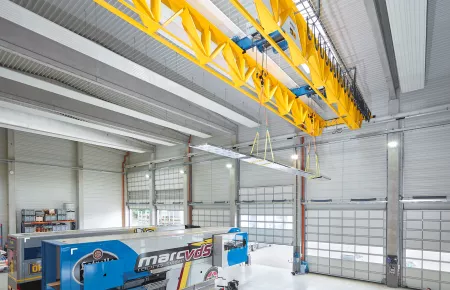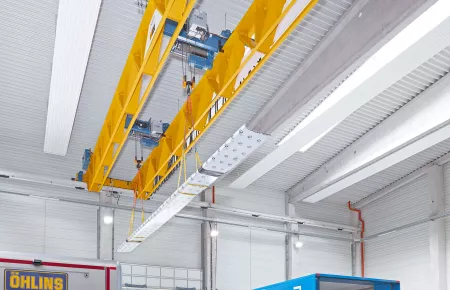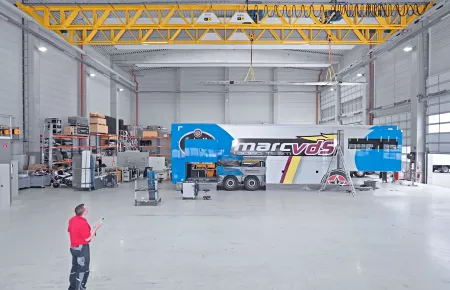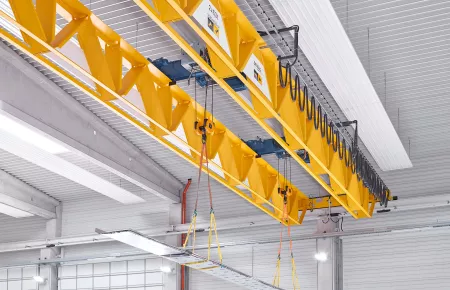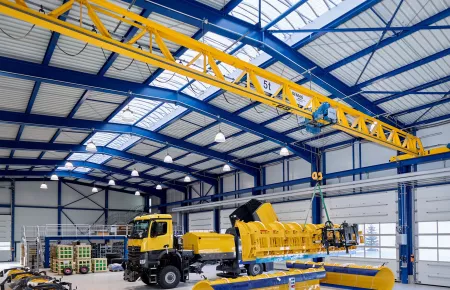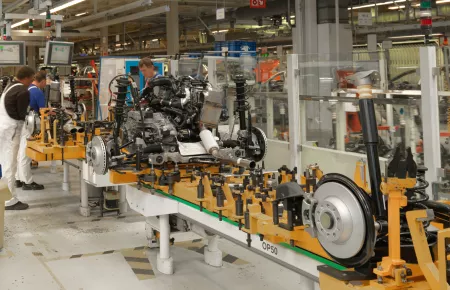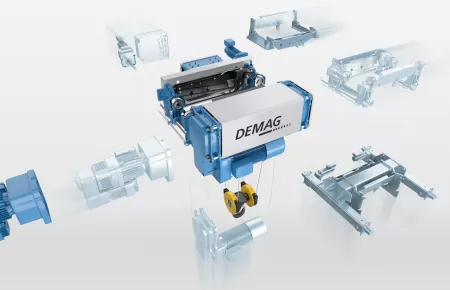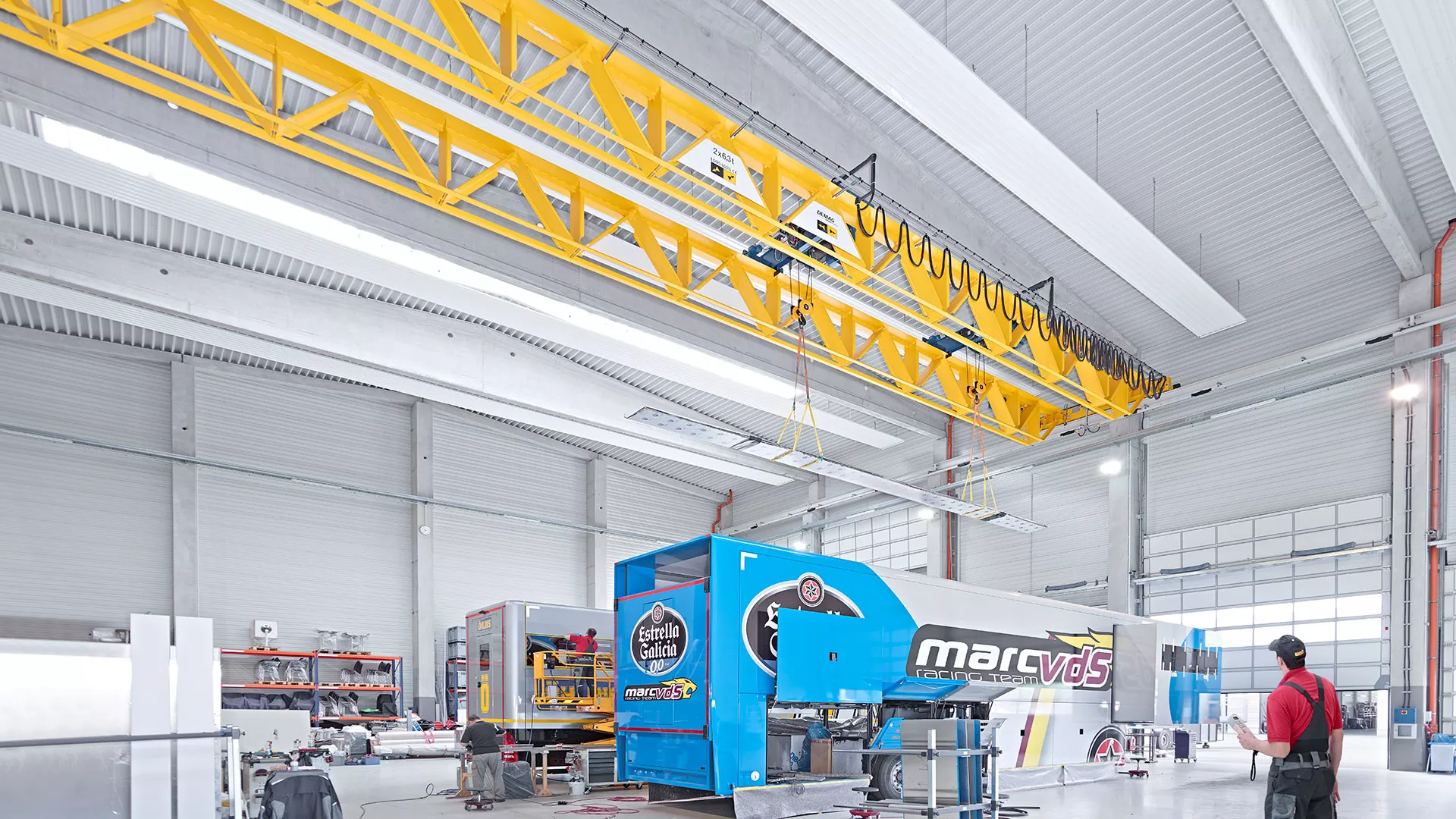
Dedicated handling and positioning in vehicle manufacturing
Demag cranes for motorsports
V-type double-girder crane for Bischoff + Scheck
Customer
Ever since its foundation in 1997, Bischoff + Scheck AG has brought one-of-a-kind, innovative concepts in the special-vehicle manufacturing sector to life. At the company’s location in Rheinmünster, Germany, over 70 employees build OB vehicles, RVs, and promotional vehicles. The founders’ passion for motorsports is reflected in the production of race and hospitality trailers for various racing teams. The innovative vehicles provide ample comfort and functionality for racing weekends and enable race drivers and employees to take a break.
Requirement
Bischoff + Scheck truck bodywork is designed and built almost entirely in Rheinmünster. The company needs expanded manufacturing capacities for its constantly growing production operations and, among other things, invested in a new assembly facility for its location. The sun’s energy is absorbed on the facility’s roof by solar panels. The additional weight of these panels means that the roof structure has a reduced load capacity.
This comes with special requirements for the crane equipment used in the facility. The corresponding cranes are used to lift the large and heavy truck bodies onto the chassis and install them. This requires a high level of precision. In addition, the solar equipment on the roof means that the facility needs a crane model that is as lightweight as possible and that will not overload the building structure.
Solution
The most efficient method for the safe handling and dedicated positioning of large and heavy loads is to operate cranes in tandem. Two DMR rope hoists with a load capacity of 6.3 tonnes can work individually or in tandem. Both crabs travel on a double-girder overhead traveling crane, with V-type girders, that can transport the truck bodywork components across a span of 28.7 meters.
The roof structure’s reduced load capacity is accommodated by reducing the load bearing capacity of the crabs in tandem crane operation to 5 tonnes each in the outdoor area of the bay. If necessary, crane operators can use their radio control system to switch between individual and tandem modes safely and easily.
Special features
The V-type girder design with diaphragm joints reduces the equipment’s weight. This has a positive effect and makes it possible to use the crane’s load capacity while adhering to the restrictions posed by the building’s structure.
The smart SafeControl system continuously monitors the crane data and ensures that the equipment will be shut down if any irregularities occur, also with reference to the starting conditions in the outdoor area of the bay. Crane operators can lower the load or move it back to the area that has no load reduction. Load summation provides protection against crane bridge overloading. In addition, SafeControl can prevent accidental collisions between the two crabs with optical distancing.
The DRC-10 radio control system enables operators to control the crane intuitively and ergonomically.
Image gallery
Image gallery
